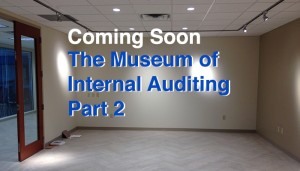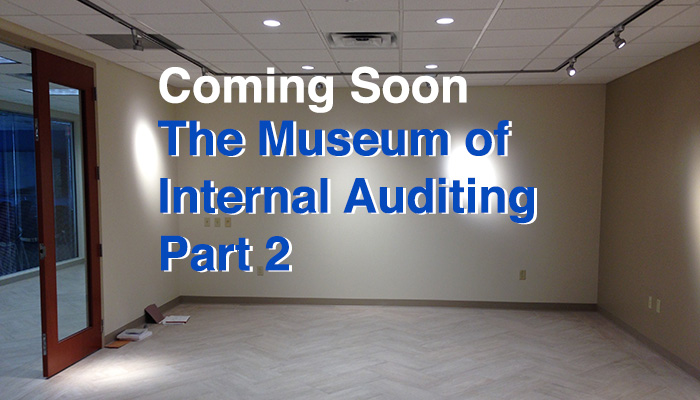First Step – Putting together an exhibit plan

First Step – Putting together an exhibit plan
The previous article in this series explores why this museum was important and why we wanted to help make it happen. This article is about how we started making it a reality.
Research, writing, editing, scheduling, budgeting, more writing, and more editing. It is that simple.
We were hired by the Institute of Internal Auditors and the museum will be housed in their new campus in Lake Mary. Its opening will coincide with the 75th anniversary of the founding of the Institute. The space that they had available was a single 475 square foot gallery.
Our first step in the process was to create an exhibit plan. This exhibit plan is similar to a traditional museum master plan. It has many of the same components, but it is more focused on getting the story right. To get started, we set an overall project budget and discussed a few different ways that we could approach telling the story.
We knew that getting the story right was going to be a process and that we weren’t going to get it right on the first try. This exhibit plan gets us started in the right direction and we look to refine it throughout the design and fabrication process. Because the space was limited, we also knew that we would need to edit the story extensively to have a chance to tell it well.
They were clear that they did not want a museum about the Institute of Internal Auditors, but rather they wanted a museum dedicated to the profession of Internal Auditing. This opened the timeline of the story significantly. Through historical research, we found examples of internal auditors dating back thousands of years.
As we began to compile the information for the exhibit plan, the story started to take shape. We identified the major elements to the story and found a way to arrange the elements in the space that we had available. There were four major story elements and a few elements that didn’t directly support the story, but put it into a more human context. It was a very logical telling of the story that centered on major events or changes in the world that led to changes within the profession.
We took the project budget that we had discussed earlier and broke that down into smaller pieces so that they could see where their money would be spent. Then we produced a detailed schedule complete with project and payment milestones. It was clear as soon as we started developing the schedule that while there was plenty of time to make all of it happen, we all needed to get right to work. We were only months away from deadlines for first drafts of graphics copy, scripts for videos, and more.
The Exhibit Plan is a great tool that helps both us and our client see the path to success for the project. It clearly lays out what needs to be done and when it needs to be done. It lets our client know what the costs will be at each stage and when they need to be prepared with milestone payments. With all this information in front of us, we can easily divide up the tasks and get to work.
The next step in the process will be the Design Kickoff Meeting. There we will conduct surveys and gather stakeholders for a facilitated meeting to set the design goals. This will also be the first time that we send the story out to the larger community and will be a chance for us to see how well we did with it.
This is the second post in a multi-part article about the process of designing and building the Museum of Internal Auditing in only eight months. The next article will cover the Design Kickoff Meeting and how we challenged our own Exhibit Plan to make sure that we tell the right story. If you would like to read more about this process, you can use the following link:
https://www.astexhibits.com/building-a-museum-in-eight-months/

